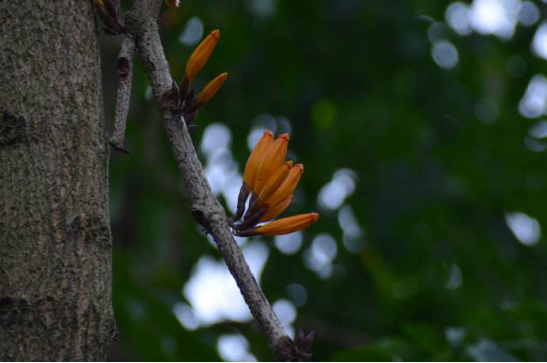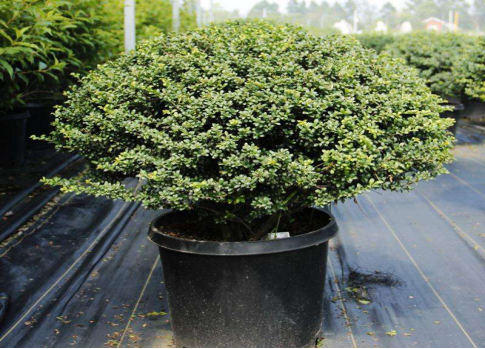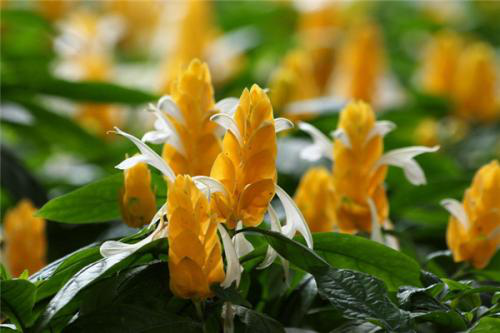Culture method of Burning Flowers
1. Soil
Burnt flowers like fertile and deep soil, preferably neutral or slightly acidic soil with good drainage. Although the burning flower originated in the tropics and has a strong resistance to barren, we still need to apply a certain amount of base fertilizer to it when planting.
Second, light temperature
Burning flowers like the light and the warm growing environment. The fire is heat-resistant but not cold-resistant. The suitable temperature for growth is between 23 ℃ and 30 ℃, and it can withstand about 0 ℃ in winter. However, the burning flowers should not be kept at low temperature for a long time, otherwise the plants will be frostbitten. Burning flowers like the growth environment with plenty of sunshine, and only when there is enough light will they grow well, so they should be exposed to the sun.
III. Water and fertilizer
The demand for water and fertilizer for burning flowers is not high, and it is necessary to pay attention to replenish water in time during the growth period, especially in times of high temperature and drought. Fertilization needs to be carried out according to the fertility of the soil, and appropriate supplementary fertilizers are needed during the growing period of burning flowers, mainly thin fertilizer, fertilizing three to five times a year, fertilizing needs to pay attention to the proportion of all kinds of fertilizers, and increase the application of phosphorus and potassium fertilizer in autumn.
Understand the method of fire flower culture, then we will understand how to deal with the diseases and insect pests that will occur when raising fire flowers.

Culture method of Burning Flowers
Burning flowers often grow in dry and hot valleys and relatively humid lowlands and low mountain jungles at an altitude of 1900 meters.
Fire flowers are native to tropical and subtropical regions, like high temperature, high humidity and sunny environment, but can withstand dry heat and semi-shade, can not bear cold, avoid frost. The suitable temperature for growth is 23 to 30 ℃, and it can withstand a temperature of about 0 ℃, but if it is kept at a low temperature of 5 to 6 ℃ for a long time, its branches will suffer frost damage.
It can be cultivated in the open field in South China, but it can only be dwarfed and potted in other areas and moved indoors in winter. Neutral to slightly acidic soil with deep soil layer, medium fertility and good drainage, which is not resistant to salt and alkali. Grow slowly on dry and barren soil.
Huohua likes light and heat resistance, drought resistance, water humidity resistance and barren resistance, but it is better to cultivate loam or sandy loam with good drainage; it is not resistant to wind and wind branches are easy to break, but it is not resistant to cold, and the suitable temperature for growth is 23: 30 ℃. Apply sufficient basal fertilizer when planting, and pay attention to replenish water to the young trees during high temperature and dry periods.
The demand of burning flower for fertilizer is not high, but it also needs to supplement fertilizer properly during its growth and development, mainly compound fertilizer and organic fertilizer. According to the fertility of the soil, fertilizer can be applied 3-5 times a year to master the principle of frequent application and light application. Flame trees need higher temperatures to blossom. In northern China, they do not blossom or blossom less because of lower temperatures. During the blooming season, the flowers bloom at the top of the crown, like a blazing water flame, and the flowers are as gorgeous as fire. It can be used for street trees and garden greening.
Propagation methods of Burning Flowers Culture methods and matters needing attention of burning flowers
Bonsai Flower Network Guide: today, the editor of Flower Bonsai Network shares with you the breeding methods of burning flowers, the breeding methods of burning flowers and matters needing attention. Let's take a look.
The fire flower is a kind of small tree, the fire flower is orange, very bright, the blossom is like the flame burning, very vivid, today we come to understand the propagation method of the fire flower.
Sowing and propagation of burning flowers
Sowing and reproduction is the main way of propagation of burning flowers.
Burning flowers can blossom in many seasons, so we can collect seeds in many seasons, so we usually use the way of sowing and reproduction to reproduce burning flowers. The way we collect the seeds of burning flowers is to pick the ripe fruits of burning flowers, dry them in a windless environment, and gently knock down the seeds of burning flowers after they crack in the air, so that we can collect the seeds of burning flowers. We can store the seeds of burning flowers for the winter and sow the seeds at the right time.
We usually sow seeds in warmer spring, because the seeds of burning flowers are very small, so we usually sow them directly on the soil, then cover them with a thin layer of soil to maintain a temperature of about 25 °C. and at the same time keep the soil moist, it takes a week or so to sprout and plant three to five years to blossom.
Cutting Propagation of Burning Flowers
Generally speaking, the method of cutting propagation will not be used in the propagation of fire flowers, because the survival rate of fire flowers propagated by this method is relatively low. in order to improve the survival rate of cutting propagation, we can use the method of vegetative propagation. the method of high-altitude pressing can effectively improve the survival rate of cuttage propagation, and the fire flowers propagated by this method are generally used in potted plants.
Fire flowers successfully propagated by this method usually blossom in a year or two.
Culture methods and points for attention of Burning Flowers
Burning flower is a kind of woody plant, which is strong in nature and easy to breed. It is also full of artistic conception to use burning flowers as ornamental trees and to watch their gorgeous flowers.
The culture method of burning flowers soil
Huo Chaohua likes the soil with deep and fertile soil, and the neutral or slightly acidic soil with good drainage is better, which can tolerate barren and needs to apply a certain amount of base fertilizer when planting.
Light and temperature
Burning flowers like the light and the warm growing environment. Burning flowers can be heat-resistant but not cold-resistant. The suitable temperature for growth is between 23 ℃ and 30 ℃. It can withstand high temperature of about 0 ℃ in winter, but it can not be kept at low temperature for a long time, which will make the plant frostbite. Generally, fire-burning flowers are cultivated in China, which can be planted in open field in South China, and potted plants are needed in other areas in winter and moved into indoor conservation. Burning flowers like the sunny growth environment, there is sufficient light will grow well, but can also withstand semi-shade.
Watering and fertilizing
The demand for water and fertilizer for burning flowers is not high, so it is necessary to pay attention to replenishing water in time during the growth period, especially in times of high temperature and drought. Fertilization needs to be carried out according to the fertility of the soil, and appropriate supplementary fertilizers are needed during the growing period, mainly thin fertilizer, fertilizing 3-5 times a year, more nitrogen fertilizer can be applied, and phosphorus and potassium fertilizer should be increased in autumn.
Matters needing attention in the Culture of Burning Flowers
Propagation of fire and burning flowers is commonly used by cutting, sowing or striping, all of which can be carried out in spring.
Common diseases and insect pests
The common disease of burning flowers is blight, which mainly occurs when it is rainy in spring and suffers greatly. Insect pests are mainly aphids, Spodoptera litura, large and small ground tigers and beetles, and so on. These pests will more or less harm the burning flowers and need to be controlled in time.
Pruning
Burnt flowers are more pruning-resistant plants, which can be pruned frequently to maintain their plant type.
- Prev

Maintenance of potted holly
Soil holly, like warm climate, have a certain degree of cold resistance, like moist semi-shade and fertile soil, but can also grow well in general soil, environmental requirements are not strict. The planted Dongqing seedlings can grow naturally after watering once, and they can be watered once every half a month according to their conditions.
- Next

Culture method of Golden Bract Flower
1. Temperature the suitable temperature for the growth of Golden Bract is about 15 ℃-25 ℃. If the temperature is too high or too low, it is disadvantageous to its growth. If the temperature is too low, the leaves will fall off, and in severe cases, the plants will even wither and die. In winter, it should be kept in a sunny place indoors, watering should be controlled slightly, and the lowest temperature should be above 10 ℃.
Related
- Fuxing push coffee new agricultural production and marketing class: lack of small-scale processing plants
- Jujube rice field leisure farm deep ploughing Yilan for five years to create a space for organic food and play
- Nongyu Farm-A trial of organic papaya for brave women with advanced technology
- Four points for attention in the prevention and control of diseases and insect pests of edible fungi
- How to add nutrient solution to Edible Fungi
- Is there any good way to control edible fungus mites?
- Open Inoculation Technology of Edible Fungi
- Is there any clever way to use fertilizer for edible fungus in winter?
- What agents are used to kill the pathogens of edible fungi in the mushroom shed?
- Rapid drying of Edible Fungi

